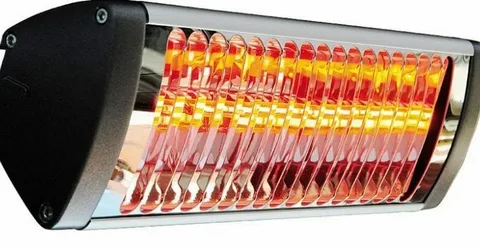When the chill of winter sets in or those cool evenings linger, staying warm and cosy becomes a top priority. Enter the far infrared heater, a modern solution that envelops you with soothing warmth. Unlike traditional heating methods that can leave your skin feeling dry and uncomfortable, Infrared Heaters work by directly warming objects and people instead of just the air around them. This innovative technology is gaining popularity for both home and office use.
But what exactly makes these heaters stand out? If you’re considering upgrading your heating system or need an efficient way to stay comfortable during colder months, you’ve come to the right place. Get ready as we explore everything you need to know about Infrared Heaters — from their benefits and features to how they fit into your space seamlessly!
What is Far Infrared Heating?
Far infrared heating is a modern approach to warmth that utilizes electromagnetic radiation. This heat penetrates the skin and warms objects directly rather than just heating the air around them.
Unlike traditional heaters, which can create drafts or uneven temperature distribution, Infrared Heaters provide consistent warmth more naturally. They mimic the sun’s rays, delivering comfort without the harshness often associated with conventional heating.
These heaters operate at lower temperatures while still being effective. As they warm up spaces quickly, energy efficiency becomes a significant advantage. This means reduced energy bills and less environmental impact over time.
For those seeking relief from chilly conditions or specific health benefits like improved blood circulation and muscle relaxation, far infrared heating offers an appealing solution worth exploring further.
Benefits of Using an Infrared Heater
Infrared Heaters offer a range of benefits that set them apart from traditional heating methods. One significant advantage is their energy efficiency. These heaters warm objects and people directly, rather than just the air around them, resulting in less energy waste.
They can also provide instant warmth, making chilly spaces comfortable almost immediately. This quick response time is perfect for those who dislike waiting for conventional systems to kick in.
Moreover, far infrared heat is known for being gentle on the skin. It promotes better blood circulation and may alleviate muscle tension or stiffness without drying out the air like forced-air systems do.
Many users also appreciate their quiet operation. Unlike noisy radiators or fans, these heaters work silently, creating a peaceful environment for homes and offices.
Factors to Consider When Choosing the Best Infrared Heater
When selecting the ideal Infrared Heater, start by assessing your space. The size of the area you intend to heat is crucial. A larger room may require a more powerful unit with higher wattage.
Next, consider the type of infrared heater that best suits your needs. Options vary from portable models to wall-mounted solutions. Portable units offer flexibility, while fixed installations can save space and provide consistent warmth.
Energy efficiency is another key factor. Look for heaters with energy-saving features or thermostats to help manage costs effectively over time.
Pay attention to safety features as well. Automatic shut-off mechanisms and tip-over protection are essential for peace of mind, especially in homes with children or pets.
Customer reviews can provide insights into real-life performance and reliability, helping narrow down your choices further.
How to Properly Use and Maintain Far Infrared Heater
Please place it in a suitable location to get the most from your far infrared heater. Ensure it’s away from flammable materials and offers ample space for airflow. When you turn on the heater, gradually set it to the desired temperature. This allows the unit to warm up efficiently while maintaining comfort.
Regular maintenance is crucial for optimal performance. Dust or vacuum the heating elements every few weeks to prevent buildup that can affect efficiency. Check the power cord regularly for any signs of wear or damage. A secure connection ensures safety and prevents potential hazards.
During off-seasons, store your heater in a dry place. Cover it with a cloth to protect against dust accumulation while not in use. Always follow manufacturer instructions for any specific care guidelines tailored to your model.
Comparison of Features and Prices
When exploring various Infrared Heaters, examining their features closely is essential. Different models offer varying wattage and heating capacities, impacting how effectively they warm up a space.
Some units come with adjustable thermostats for personalized comfort, while others include timers that help save energy by turning off automatically after a set period. Portability is also key; many heaters have wheels for easy movement.
Based on these features, price points can vary significantly. Basic models may start around $100, while high-end alternatives can reach upwards of $500 or more.
It’s wise to consider the upfront cost and potential savings on your energy bill over time. Higher efficiency often means reduced operational costs in the long run, making it an essential aspect of your investment decision.
How to Install and Use an Infrared Heater
Installing a Infrared Heater is straightforward. Start by selecting an optimal location. Ensure it’s away from flammable materials and has easy access to power outlets. Once you’ve identified the spot, follow the manufacturer’s instructions for mounting or placing the unit. Many heaters come with brackets for wall installation, while others are freestanding.
Next, plug in your heater and switch it on. Most models feature adjustable settings, allowing you to customize your comfort level easily. To maximize efficiency, keep doors and windows closed while using the heater. This helps maintain warmth throughout your space without overworking the device.
Regularly check filters and heating elements, if applicable. This ensures the longevity and peak performance of your infrared heater. Embrace its gentle warmth as it radiates evenly across your room!
Safety Precautions for Using an Infrared Heater
A Infrared Heater can enhance comfort, but safety should always be a priority. First, ensure the unit is placed on a flat surface to prevent tipping. Keep flammable materials at least three feet away from the heater. This includes curtains, furniture, and other items that could easily catch fire.
Regularly inspect your heater for damaged cords or connections. If you notice anything unusual, stop using it immediately and consult the manufacturer’s guidelines. Always follow the manufacturer’s instructions regarding operation and maintenance. Overheating due to improper usage can lead to hazards.
Never leave an infrared heater unattended while it’s in use. It’s best practice to turn it off when leaving a room or going to sleep. Consider investing in models with built-in safety features like tip-over protection and automatic shut-off mechanisms for added peace of mind.
Making the Right Choice for Heating Needs
Choosing the right Infrared Heater can feel overwhelming with many options. Start by assessing your space—consider both size and insulation. A larger room may require a more powerful unit.
1. Assess Your Space
Before making any decisions, assessing the space you need to heat is essential. Consider both the size of the room and its insulation. A larger room or one with poor insulation will require a more powerful heater than a smaller, well-insulated one.
Measure the dimensions of your space and calculate the square footage. This will help you determine how many watts you need for effective heating. Generally, you will need around 10 watts per square foot for a well-insulated room and up to 15 watts per square foot for a poorly insulated one.
2. Consider Your Heating Needs
Once you know the wattage required, consider your specific heating needs. Do you want to heat a minor area or an entire room? Are you looking for a permanent heating solution or something portable?
A personal infrared heater may be enough if you only need to heat a small area, such as your desk or bed. These are usually portable and can be placed near where you need them most. However, to heat an entire room, look for larger units covering more square footage.
3. Understand Different Types of Infrared Heaters
Several types of Infrared Heaters are available, each with its advantages and disadvantages. Panel heaters are a popular choice as they are thin and can be mounted on walls, saving space. They also provide more uniform heat than other types.
Ceramic heaters use ceramic plates to emit far infrared rays and tend to heat up quickly. However, they can be expensive and may not cover as much space as panel heaters. Carbon fibre heaters are another option, known for their energy efficiency and quick heating abilities.
4. Look for Additional Features
When deciding on the right Infrared Heater, consider additional features that may benefit your needs. Some units have remote controls for convenience, while others have built-in timers or thermostats for temperature control.
Safety features such as automatic shut-off in case of overheating should also be considered. And if you plan on using your heater in a humid environment, look for moisture-resistant models.
Conclusion
Choosing the right far infrared heater can transform your living or working space. It’s essential to consider your needs, whether for comfort during chilly months or energy efficiency. Be open to exploring various models and features available in the market. Understanding what each option offers will lead you to a heater that fits seamlessly into your lifestyle. Please pay attention to safety and maintenance tips, as they significantly influence performance longevity.
FAQs
What is the difference between far infrared heater and traditional heaters?
far infrared heaters warm objects and people directly through radiation, unlike traditional heaters that heat the air. This means they can provide warmth faster and more efficiently.
Are there any health benefits associated with using an infrared heater?
Yes! Far infrared heat can help improve blood circulation, reduce muscle pain, alleviate joint stiffness, and promote relaxation. Many users report feeling less fatigued after consistent use.
How much energy do infrared heaters consume compared to conventional heating systems?
Far infrared heating’s are generally more energy-efficient than conventional systems since they focus on heating people rather than empty spaces. This targeted approach often results in lower energy bills over time.
| Related Business Listings |
| Contact Directory |
| Local Business Profiles |




